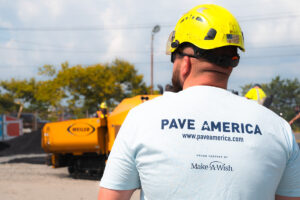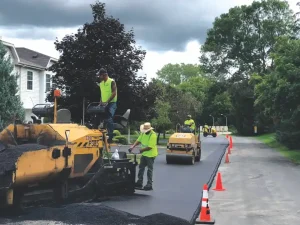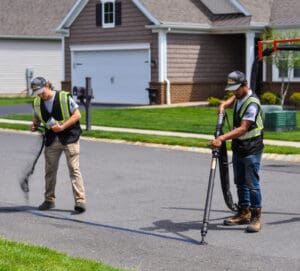Properly installing road signs at your commercial property is crucial to directing traffic and preventing accidents. There are several factors to take into consideration before installing road signs, like federal and state requirements. Everything from the sign design, height and reflectivity has to be specific. We are breaking down the many factors to consider before installing a road sign at your business.
Types of Road Signs
There are four different kinds of road signs to consider installing at your business, when relevant:
- Warning Signs: These give drivers advance notice of potentially dangerous situations or road conditions ahead. Drivers who may be unfamiliar with a particular road find these signs to be very helpful. Warning signs can alert drivers about upcoming traffic lights or curves in the road.
- Regulatory Signs: These signs communicate the road’s traffic laws, like Stop, Yield, One Way and Do Not Enter.
- Guide Signs: Guide signs will direct drivers to a destination, like a hospital or library.
- Work Zone Signs: Whenever there is construction or road work ahead, these signs should be installed to warn drivers to proceed with caution. This protects both workers and the areas they are repairing.
Now that you have a better understanding of what kinds of road signs to consider, you have to also consider how the sign will be installed at your property. The Maryland Department of Transportation requires that all road signs regulate traffic, reduce congestion, ensure safety, and help achieve efficient traffic flow. Traffic signs are the primary way to ensure safety for drivers on the road. Each sign should fulfill a need, command attention, convey a clear and simple meaning, command respect of the road and give the driver adequate time to respond. Here are several factors to consider when accomplishing these requirements:
Placement
Visibility is the main source of concern when installing a road sign. You want the sign to be seen with advance notice, so that drivers can be prepared for what lies ahead. Avoid installing a sign within a heavily landscaped area, as this can be hard to see or distracting. When installing the sign, a professional should always check with the utility company to avoid cutting underground cables or conduits near the sign. The traffic sign should be placed vertically above the ground.
Proper Reflectivity
Traffic signs not only have to show clear and contrasted colors, but they also have to properly reflect so they are visible both day and night. Traffic signs are made with a material called sheeting, which is usually made of glass beads and reflective at night. Exposure to weather elements like sunlight can cause the signs to fade over time. A professional should check the reflectiveness of your traffic signs regularly.
Sign Support
The steel support posts that hold up a traffic sign are also heavily regulated. Most are typically made of either wood or steel. Should a driver accidentally hit a traffic sign, the FHA requires that the sign’s support must be able to break away upon impact.
Work With Pro-Pave, Inc.
Pro-Pave, Inc. has established a reputation as one of the Washington, DC area’s most reliable paving companies. Since 2001, Pro-Pave has provided asphalt paving, concrete paving, and property maintenance services to various customers, including churches, colleges and universities, retailers, HOAs, and more. We regularly install traffic signs in commercial spaces, while staying up to date on the latest state and federal regulations.
To find out more about how we can help you, contact Pro-Pave today. Visit our website, or give us a call at (703) 433-9500.
Source: https://roads.maryland.gov/mdotsha/pages/Index.aspx?PageId=47



